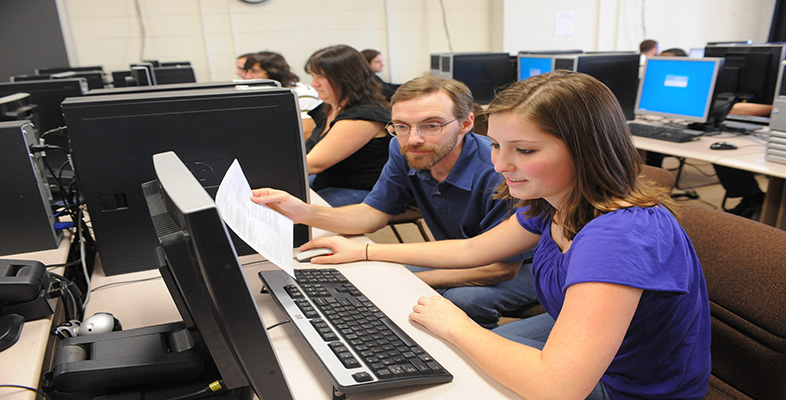3.2 Evaluating open learning
Having experimented with some of the search tools available and got some results, the next step for anyone searching for relevant content is to evaluate these results in a systematic way. If you intend to use OERs for direct teaching and learning purposes, or for some repurposing prior to teaching and learning, there are several attributes that need to be considered first. Important attributes of quality OERs include:
- accuracy
- reputation of author/institution
- standard of technical production
- accessibility
- fitness for purpose
- clear rights declarations, e.g. Creative Commons.
The JISC Open Educational Resources infoKit quality considerations [Tip: hold Ctrl and click a link to open it in a new tab. (Hide tip)] web page contains a range of detailed criteria for consideration. Some key criteria that you might want to adopt when evaluating your results might be grouped into attributes. For example:
- Can the content be described as follows?
- Relevant, accurate, appropriate level of detail, objective, current and jargon-free.
- Of good provenance (consider the reputation of the author/institution), with a list of references if appropriate.
- Free of advertising.
- Does it fit my chosen pedagogy?
- Learning outcomes are stated and match with learner’s needs.
- Engaging and interactive.
- Set at the appropriate level, with any prerequisite skills/understandings stated.
- The time required to study is stated and equates to the importance of the learning outcomes achieved.
- How does it measure up to usability/accessibility standards?
- Easy-to-use and well presented, with clear navigation.
- Accessible for users with disabilities and conforms to accessibility guidance e.g. the UK Equality and Human Rights Commission’s general web accessibility guidance.
- How genuinely re-usable is it?
- A standalone resource that can be reused in different contexts.
- Robust and functional, and works on different browsers/platforms.
- Rights are fully documented, e.g. does it carry a clear CreativeCommons or other rights declaration? Is it OK to re-use it? Are there any conditions?
The video below provides a record of a session previously delivered on the topic of finding and evaluating OERs as part of the activities run for SCORE fellows at The Open University. You can see from watching this that there were very diverse experiences encountered by the participants in using the search tools and locating OER that met their expectations or requirements, and that there is still a need to improve the searching experience for learners, teachers and researchers when seeking OER.
Transcript: Finding and evaluating OERs
Lisbeth Levey highlighted the issues of finding relevant OER in a 2012 report published by the Commonwealth of Learning. Her personal account of trying to locate and use OER suitable for supporting a postgraduate university course in agriculture within an African context demonstrates:
- the richness and breadth of material available
- the considerable challenges associated with finding relevant material that is openly licensed for re-use
- the crucial need to frame searches well in order to retrieve good quality material.
Activity 5
Join an OpenLearn free course that you are particularly interested in, or which you have already studied, and do the following:.
- Investigate the rating system provided. Look at the questions about quality, interest and difficulty.
- Look at any constructive comments in the Comments section (if there are any).
What other questions would you wish to ask to obtain feedback on your OER?
Discussion
I would want to obtain specific feedback in addition to the general comments under the rating system. I am interested in how people have engaged with Compendium and FM, and how easy (or rather how difficult!) people find the different ways that free courses can be downloaded.
Activity 6
How do you usually evaluate sources of information for the resources that you create? Do you have to do things differently for OERs? Where can you find an OER for your discipline/subject area? What tools can you use to evaluate their usefulness?
Discussion
Creating an OER isn’t vastly different from creating a normal teaching resource: it’s a way of licensing a resource so that it can be shared with peers and colleagues, and enables them to change and develop it further if necessary to suit their own teaching practises. There is a wide range of repositories – some, such as Humbox for social sciences and LORO for languages, that are subject-specific. Others, such as Jorum, OpenLearn, OpenCourseWare Consortium and MERLOT, hold a wide range of resources on a variety of different subjects. There are also tools such as OpenNottingham’s ‘Xpert’ that will help you to source content from a wide range of repositories without having to interrogate each one individually. Tools for evaluating the usefulness of an OER include:
- the credibility of the resource
- academic/professional judgement
- the licence, and whether it enables adaptation and change as needed
- the accessibility of the resource
- the platform and software the resource is built in and how easy it is to make the necessary changes (e.g. a PDF document is difficult to adapt, whereas a Word file is simple).
Only you can make the professional judgement as to whether the resource will suit your teaching and learning needs.
